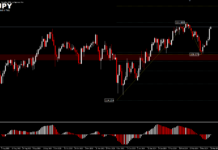Yesterday, the Bank of Japan unexpectedly tweaked its yield curve control (YCC) policy, raising its target for 10-year bond yields to 0.5% (previously 0.25%). The move reflects the central bank’s move towards policy normalisation, while also testing the market’s reaction to its exit from ultra-easy policy. The central bank later said that it was “only fine-tuning rather than withdrawing stimulus” and that it would “still increase the size of its bond purchases significantly”, but this still did not stop the market from whipping up a wave of volatility. In short, when the Bank of Japan is no longer as dovish as before, the spread between the Dollar and the Yen could narrow, and the appreciation of the yen will attract foreign capital back to Japan.
 Figure 1: Japanese multi-tranche bonds and yields. Source:World Government Bonds
Figure 1: Japanese multi-tranche bonds and yields. Source:World Government Bonds
The Japanese bond market reverberated significantly after the news was announced. Compared to the previous month, 7/8-yr bond yields recorded a rise of almost 20 bps; 6/15-yr yields recorded a rise of over 15 bps; 10/20-yr yields rose by over 14 bps [10-yr highest since 2015]; 30-yr yields rose by over 7 bps while 4/5-yr yields increased by over 6 bps. Long-end yields (15-, 20-, 30- and 40-year) posted gains of more than 20 basis points compared to six months ago.
By yesterday’s close, USDJPY suffered a short sell-off, plunging more than 5% from an intra-day high of 137.47 to close at 131.69, close to a 4-month low. Its one-day sell-off also exceeded the level seen on November 10 (-4.57%). In today’s Asian session, Goldman Sachs expects that the Bank of Japan’s next move could be to abandon negative interest rates. Naohiko Baba, chief economist and managing director of the bank’s Japan division, further noted that “the removal of negative interest rates would enhance the sustainability of the BoJ’s yield curve control policy”.
Technical Analysis
Later today, the market will see the Canadian CPI data for November. The market is expecting the data to register 0% YoY and 0.7% previously. If the data performs as expected, this will be a new low since August. Year-on-year, the data is expected to slip to March this year’s level of 6.7%, compared to the previous value of 6.9%. The slowdown in inflation data may also be unfavorable to Canadian dollar bulls in the short term. From a technical point of view, the daily chart shows the CADJPY extending its losses and testing the 97 area after the news was released. A break below this area would likely extend the market sell-off and push the pair to the next support at 94. On the other hand, a technical rally would require attention to the key resistance at 99.80-100 (which is FR 50.0% of the highs extended from the lows seen this year) and 102.50.
Click here to access our Economic Calendar
Larince Zhang
Market Analyst
Disclaimer: This material is provided as a general marketing communication for information purposes only and does not constitute an independent investment research. Nothing in this communication contains, or should be considered as containing, an investment advice or an investment recommendation or a solicitation for the purpose of buying or selling of any financial instrument. All information provided is gathered from reputable sources and any information containing an indication of past performance is not a guarantee or reliable indicator of future performance. Users acknowledge that any investment in Leveraged Products is characterized by a certain degree of uncertainty and that any investment of this nature involves a high level of risk for which the users are solely responsible and liable. We assume no liability for any loss arising from any investment made based on the information provided in this communication. This communication must not be reproduced or further distributed without our prior written permission.




















